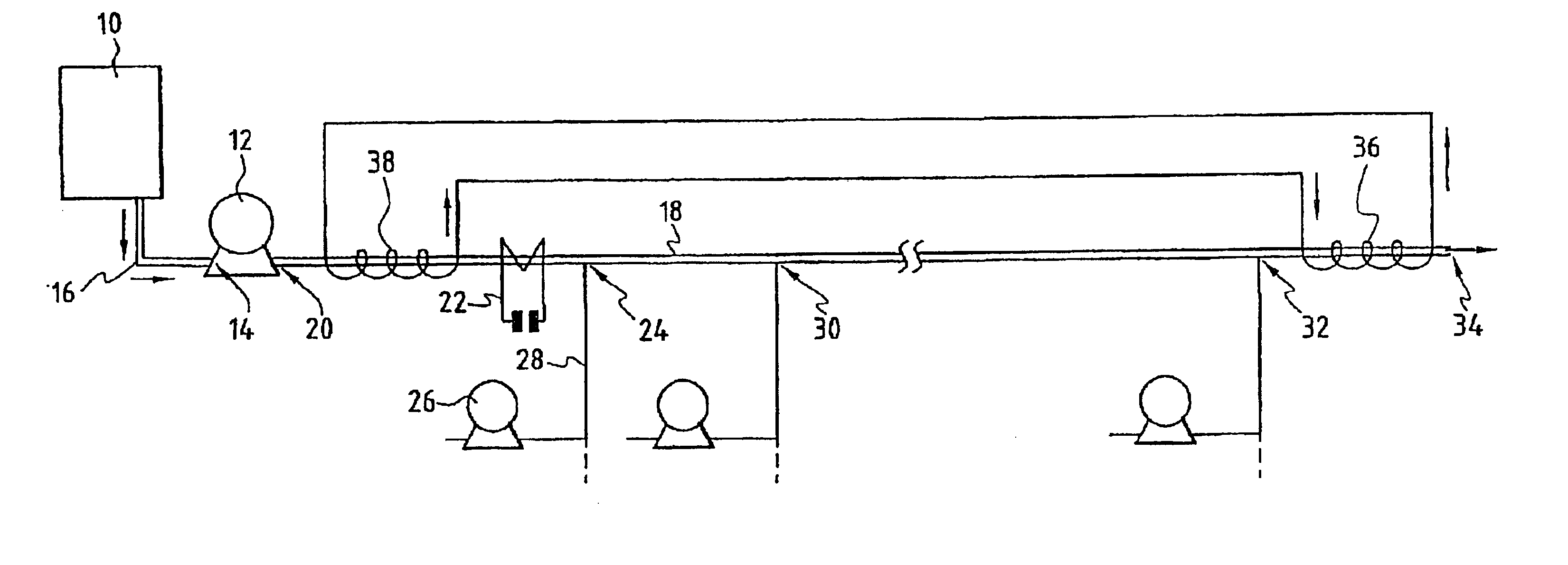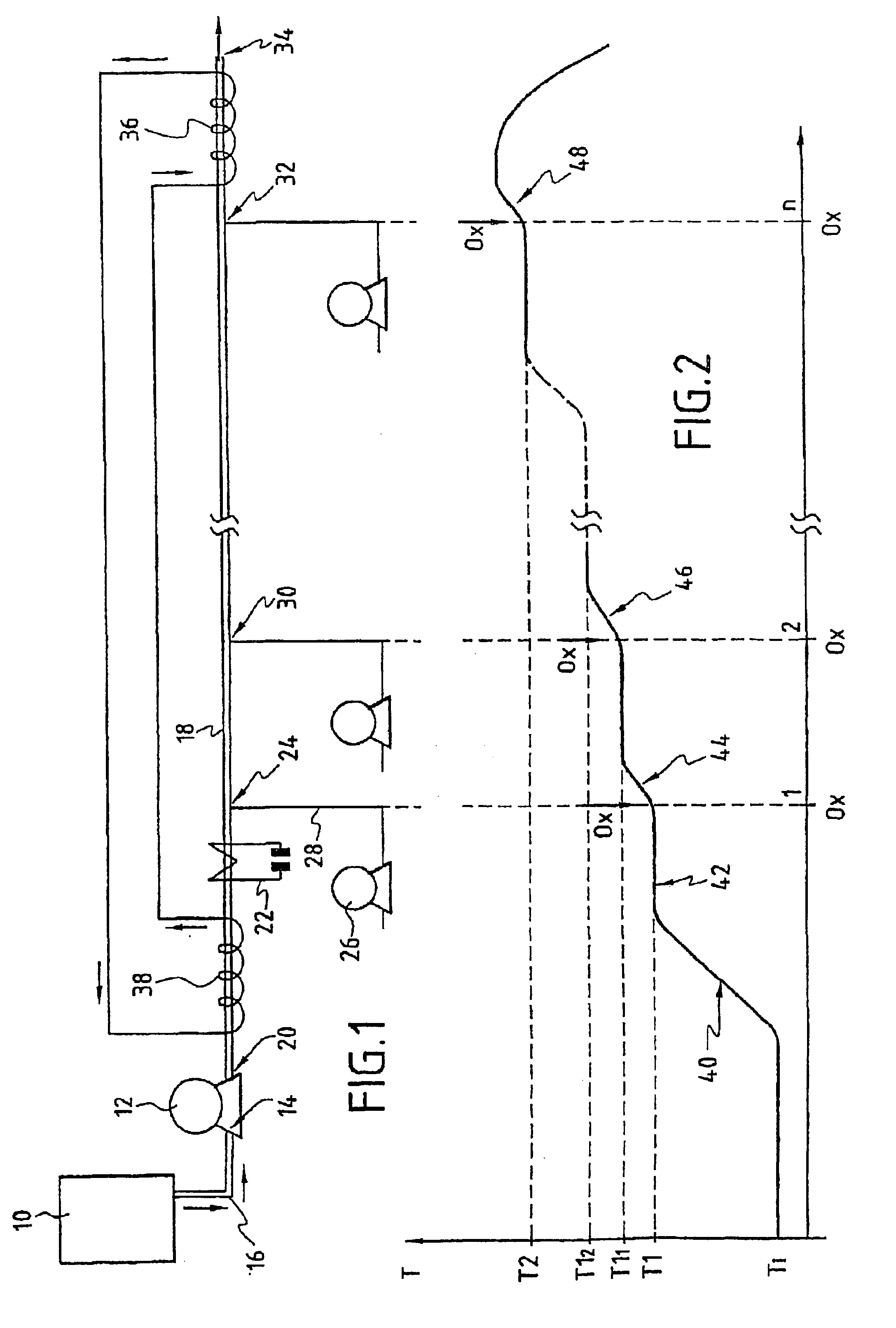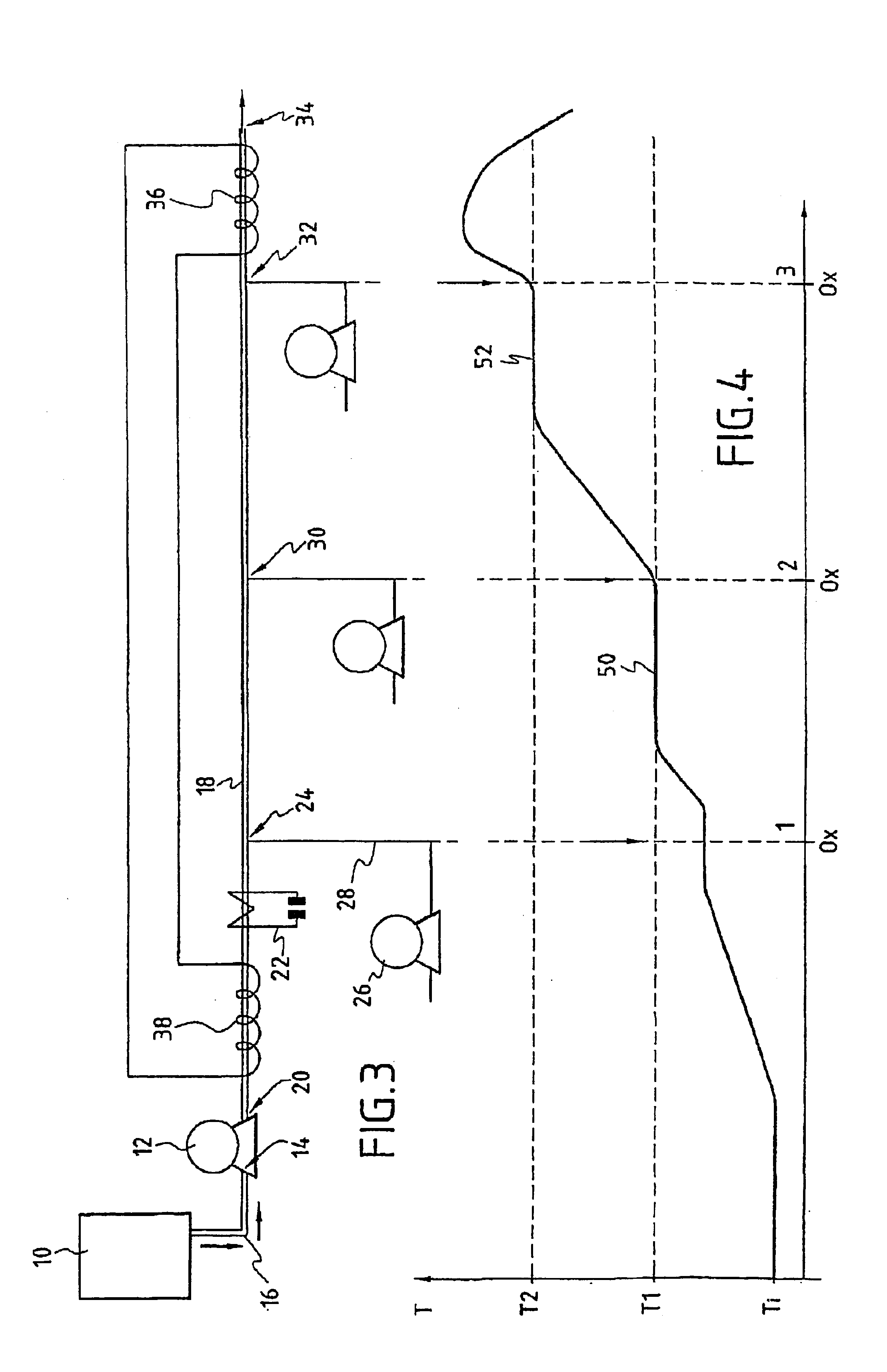Method for treating waste by hydrothermal oxidation
a hydrothermal oxidation and waste technology, applied in the direction of sludge treatment by oxidation, supercritical condition processes, bulk chemical production, etc., can solve the problems of affecting affecting and not allowing the optimal decomposition of organic matter, etc., to achieve the effect of improving the total energy balance of the process, improving the reaction time and thus the reaction yield
- Summary
- Abstract
- Description
- Claims
- Application Information
AI Technical Summary
Benefits of technology
Problems solved by technology
Method used
Image
Examples
Embodiment Construction
[0045]Reference will be made to FIG. 1 in describing the plant for implementation of the process for the oxidation of the organic substances present in the aqueous effluent.
[0046]The aqueous effluent comprising the organic substances to be converted is stored upstream of the plant for implementation of the process in a tank 10. The aqueous effluents are generally composed of industrial or municipal sludge or of aqueous liquors resulting from industrial processes.
[0047]A pump 12, the entry orifice 14 of which is connected via a pipe 16 to the lower end of the tank 10, is capable of pumping the aqueous effluent and of injecting it under pressure into a tubular body 18 at its inlet orifice 20. The pump 12 is capable of injecting the aqueous effluent into the tubular body 18 under a pressure of greater than 22 MPa, which corresponds substantially to the critical pressure of water.
[0048]The tubular body 18 is equipped with a thermoelectric generator 22 which at least partially surrounds ...
PUM
 Login to View More
Login to View More Abstract
Description
Claims
Application Information
 Login to View More
Login to View More - R&D
- Intellectual Property
- Life Sciences
- Materials
- Tech Scout
- Unparalleled Data Quality
- Higher Quality Content
- 60% Fewer Hallucinations
Browse by: Latest US Patents, China's latest patents, Technical Efficacy Thesaurus, Application Domain, Technology Topic, Popular Technical Reports.
© 2025 PatSnap. All rights reserved.Legal|Privacy policy|Modern Slavery Act Transparency Statement|Sitemap|About US| Contact US: help@patsnap.com



